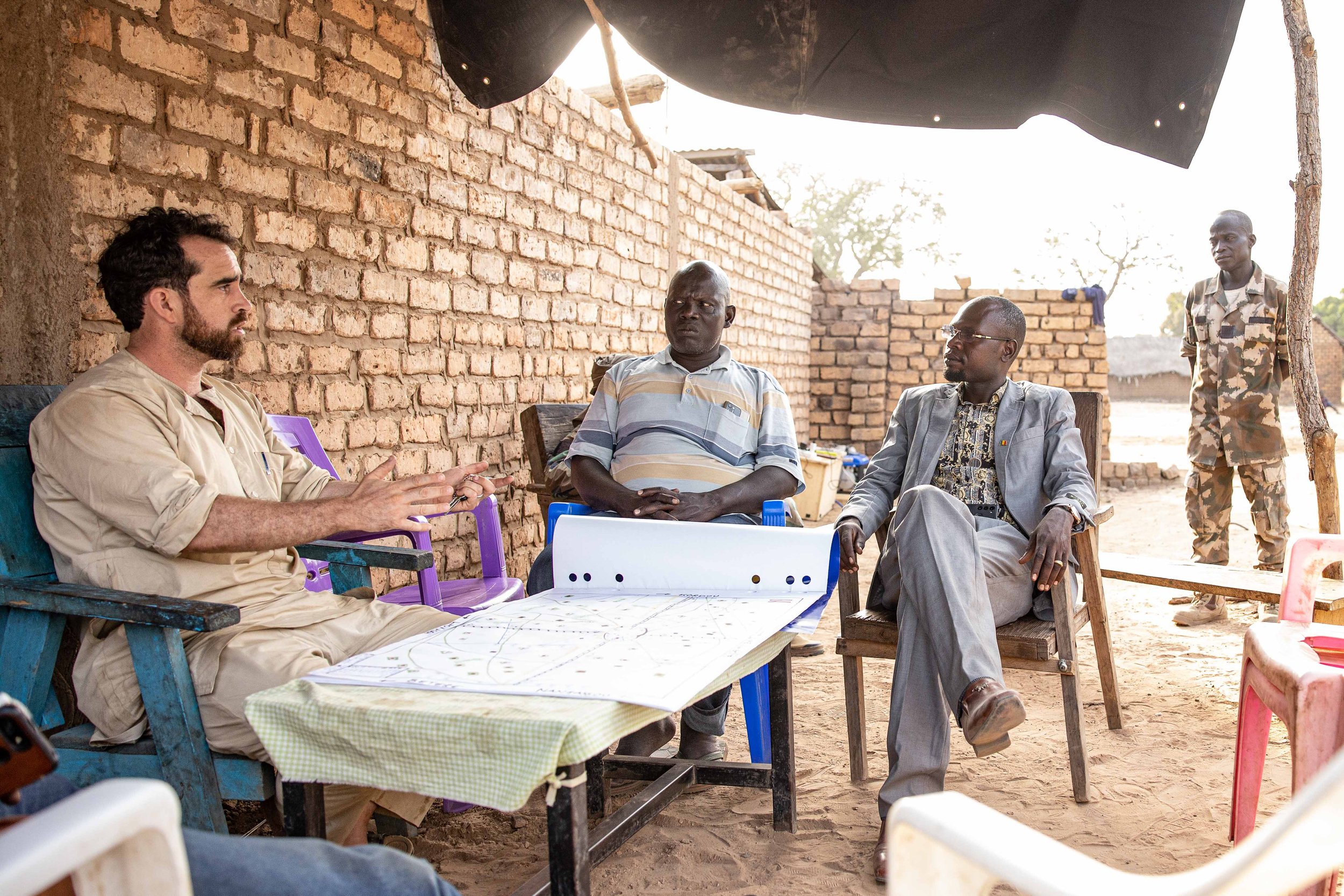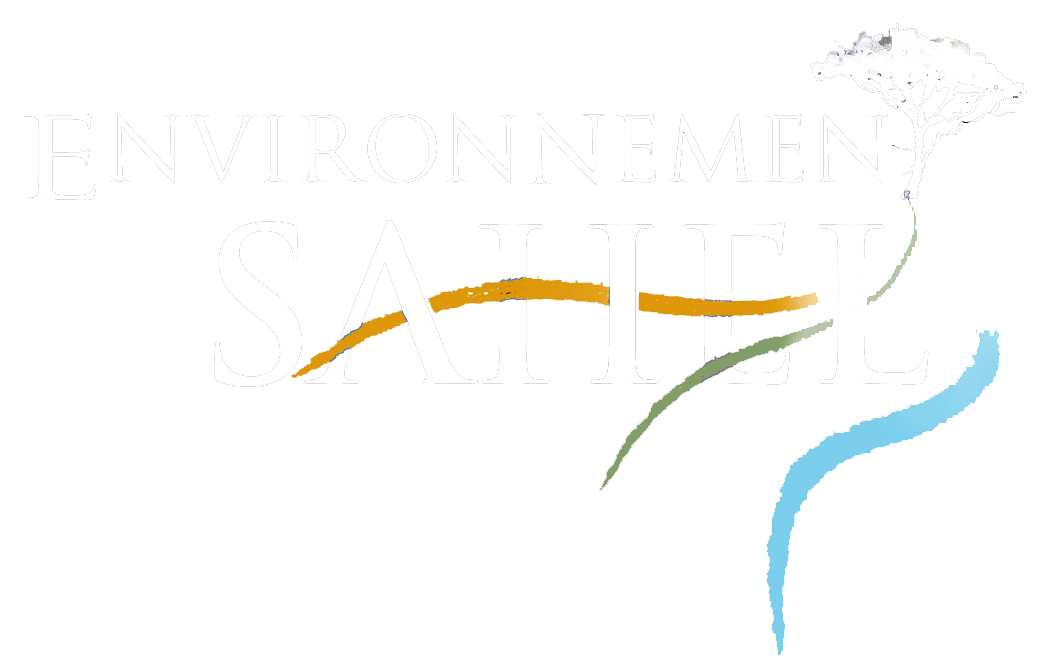About
Concerned with the degradation of the spaces between many of Chad’s parks and reserves, environment hydrologist Ache Tahar Sougoudi, computer engineer Adam Haggar, financier Pierre Ngolsu, businessman Tahir Oumar Souni, and conservationist Henry Bailey set up the non-profit organisation Environment Sahel in 2022.
Vision
Our vision is to see landscapes and biodiversity protected and managed by empowered communities whose livelihoods are guaranteed through improved governance, peace, environmental management, and sustainable businesses.
Mission
Create and promote sustainable management systems, behaviours and knowledge across key landscapes which will guarantee the healthy co-existance of natural wealth, wildlife and communities today and for future generations.
Challenge
Across the Sahel and within Chad, key landscapes and biodiversity are rapidly degrading. Weak institutions and instability compound the effects of climate change, poverty and population growth. For wildlife and people living directly off the land, this results in famine, conflict, migration and the knock-on effects of severe weather events, climate change, and wider regional insecurity.
In Chad, the lack of reliable data, communication and viable strategies means that resources do not reach the communities, landscapes and wildlife in the greatest need.
Moreover, due to the complex and often contradictory post-colonial legal structure, land tenure of these rural ‘spaces in between’ exacerbates a situation where rights and responsibilities are ignored and abusive natural resource extraction thrives. As such, unsustainable deforestation, poaching, human-wildlife and inter-community conflict, and violence go unchecked.
These ‘un-governed spaces’ mean the Sahel attracts terrorist and rebel groups, people traffickers, and other criminal groups, which in turn, contributes to international security issues and uncontrolled migration.
Currently, 11.2% of Chad is under protection. In order to reach the goal of 30% by 2030*, an extra 241,392 square kilometres will have to be protected. Due to rapid population growth, many areas with potential are beginning to be settled or are rangelands for nomadic populations. Traditional conservation practices and siloed development approaches are failing to address the complex socioeconomic, demographic, and environmental situation.
*Along with over 100 other countries, Chad signed up to the 2020 UN Conference for Biodiversity’s commitment to protect at least 30% of the planet’s land and water by 2030.

The community conservation solution
The development and support of community-led conservation areas can unlock the sustainable development potential, security, and stability of communities and wildlife in their landscapes.
Well-managed landscapes demonstrate how community conservation is critical to the task of connecting different habitats, to the maintaining of these lands as carbon sinks, to the protection of biodiversity, and to providing downstream ecosystems with natural services and benefits.
Replicable and scaleable, the ‘community conservation solution’ is perhaps the only model that can enable governments in the Sahel to achieve the goal of 30% of landscapes protected by 2030.
Pathway to success
Communities in vital landscapes incorporating wildlife, ecosystem services, and people vulnerable to climate change group themselves into a cooperative or association whose membership is determined by all peoples with customary usages of natural resources in the area.
This all-inclusive membership designates priorities (natural resource management, security and stabilisation, sustainable commerce, sustainable community development) and agrees a governance model whose structure is suited to managing the communities’ chosen priorities, and integrates local and indigenous customs for managing the landscape and natural resources.
The cooperative, association or group is then registered and recognised by the government as a legal body and the ‘Community Conservancy’ is formed.
Once registered, the “Community Conservancy” can now request that the land and natural resources, customarily enjoyed by the communities represented by the membership is allocated to the Conservancy from the domain of the state. This can be achieved through existing laws recognising individuals and communities customary rights over the public domain, and which permit the attribution of Sacred Forests, Community Forests and the assignation of state property to legal entities under public law.
Impact
Result
The community has been empowered and the previous confusion between traditional and legal land tenure, rights and responsibilities has been solved.
By exercising their management responsibilities, the community can now enjoy the benefits and rights of doing a good job when natural resources, wildlife, and commonwealth are sustainably and holistically managed.
The community conservancy will be able to attract and manage investment for conservation-natural resource management, security and stabilisation, sustainable commerce, and sustainable community development.
With a gazetted management and business plan for the community conservancy, it has the potential to negotiate contracts for carbon crediting, eco-tourism and other sustainable land usage rights.
Successfully empowering communities to manage their landscapes for the benefit of the people and wildlife results in good governance, peace, environmental management, and sustainable businesses.
Establishing community conservancies in Chad will help bolster the know-how, organisational capacity, and disciplined behaviours required for the protection of the spaces in between. It will provide local communities with access to jobs, education, and health facilities. And it will benefit both local and wider ecosystems.
Managing these ‘spaces in between’ will also create a positive impact for regional and international security, helping to ensure fewer ‘un-governed spaces’ where traffickers, rebels, terrorists and other criminal elements are able to thrive through exploiting human suffering.
Make a donation
Please note that we welcome donations via Wild Philanthropy, which guarantees that 100% of donor money reaches the Trust.





